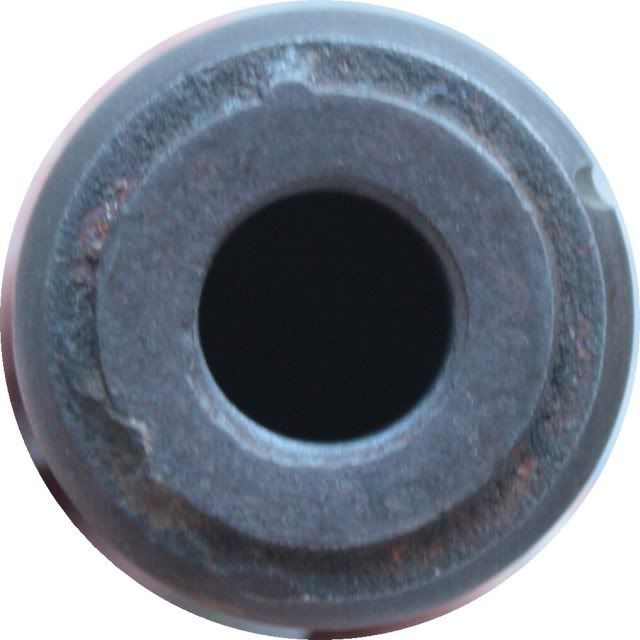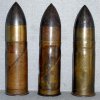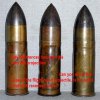Shell Shifter
Well-Known Member
Hi. An interest of mine is earlier Hotchkiss material. The first example is a 53mm base fused steel shell.
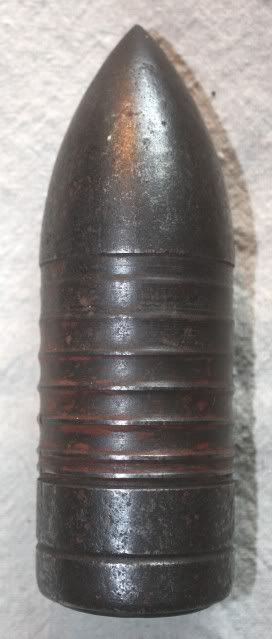

The second was found associated with a Hotchkiss Paris case. The resemblance to the first is rather profound yet, there is no mention in any literature that I have come across of the existance of such a shell. Note the base and it's similarity to the 53mm example. The blunt nose identifies it as cast iron. It is 1.65".
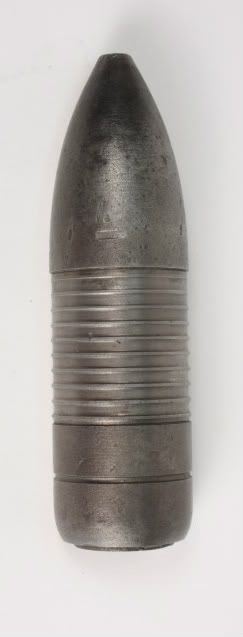
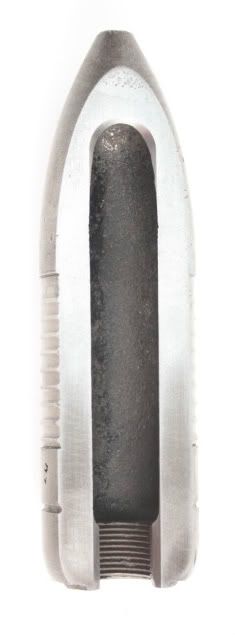
This shell had a long, deep gash on it's side. The gash matched one in the casing and suggested that someone was either very destructive or had a unique way of disarming ordnance. In any event, I used the damage to justify, perhaps mistakenly, sectioning the projectile. The cutaway view shows (I think you can make it out) remnants of a shellac coating. This was, I understand, to prevent the BP bursting charge from reacting with the iron.
Later projectiles used knurling to secure the driving band.
Whoops! The base picture for the 1.65" projectile follows.


The second was found associated with a Hotchkiss Paris case. The resemblance to the first is rather profound yet, there is no mention in any literature that I have come across of the existance of such a shell. Note the base and it's similarity to the 53mm example. The blunt nose identifies it as cast iron. It is 1.65".


This shell had a long, deep gash on it's side. The gash matched one in the casing and suggested that someone was either very destructive or had a unique way of disarming ordnance. In any event, I used the damage to justify, perhaps mistakenly, sectioning the projectile. The cutaway view shows (I think you can make it out) remnants of a shellac coating. This was, I understand, to prevent the BP bursting charge from reacting with the iron.
Later projectiles used knurling to secure the driving band.
Whoops! The base picture for the 1.65" projectile follows.

